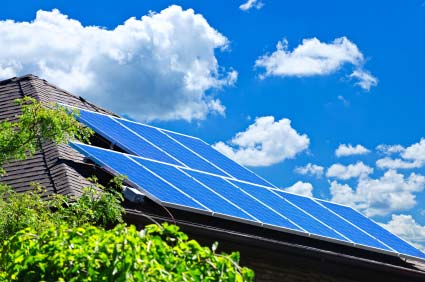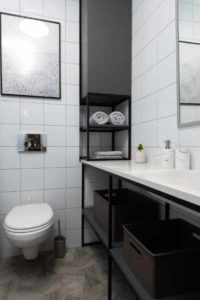Solar technology is taking off! There are multiple reasons. To start, many hold concerns about the use of fossil fuels. Not only is extracting fossil fuels difficult and dangerous, but it also harms the environment. Burning the fuels themselves pollutes the air and causes global warming. In this piece, we’ll look at solar power in Louisville KY, and elsewhere.

Even if fossil fuels were utterly harmless, they are both finite and irreplaceable. For that reason alone, we need alternatives. One such alternative, solar power, is looking very promising.
In the fall of 2014, Vishah Shah, Deutsche Bank’s top solar industry analyst, predicted that rooftop solar power would reach grid parity in all 50 states by 2016. That means electricity produced by solar power will cost the same as electricity produced by fossil fuels.
It turns out, solar power has already reached grid parity in over 10 states.
Paying for a solar array
While solar arrays are still expensive, their cost has been decreasing. Depending on their size, they can cost anywhere between $15,000 and $40,000.
There are a variety of financial incentives in the form of tax credits, rebates, and grants that help people pay for their arrays. The federal government, for example, gives everybody a 30% tax credit. In addition, the federal government has established a National Community Solar Partnership to help renters or people with small roofs go solar. They also plan to install solar arrays on federally subsidized housing.
The homeowner may also lease the array. When somebody leases a system, the solar company maintains ownership. The homeowner pays nothing upfront, but they pay the company a monthly fee that is generally locked in for the duration of the lease agreement, which often lasts 15 or 20 years.
Financing your solar setup
Another advantage of a lease agreement is that the homeowner is not responsible for any repairs or maintenance the solar array might require. Since the solar company owns the array, they are the ones responsible for maintaining and repairing the array. On the other hand, the homeowner does not get the various financial incentives, those go to the solar company. When the lease expires, the homeowner may buy the array, have it removed, renew the lease, or have the array upgraded.
The PPA or Power Purchase Agreement is a variation on the theme. In a PPA, the customer pays for the amount of power the array produces, rather than the equipment. Leases and PPAs are sometimes described as “zero down payment schemes.” SolarCity introduced them in 2006.
The intermittent nature of solar power has been another problem that took decades to solve. The sun, after all, does not always shine. That means people who use solar power in Louisville KY, need a way to store it for those times when the sun isn’t shining.
Elon Musk, who is both the CEO of Tesla Motors and Chairman of SolarCity, has recently unveiled the Powerwall battery. Tesla Motors, which already makes car batteries for its vehicles, will be selling the Powerwall batteries under the new Tesla Energy brand.
The battery comes in two sizes including a 10 kWh battery that could power the average home for one day. It will cost $3500. The Powerwall battery is a wall-mounted rechargeable lithium-ion battery that comes with a 10-year warranty.
Utility Companies Fight Back
As solar power becomes more popular, utility companies become less happy with it, as it hurts their bottom line. Consequently, they have tried (with mixed success) to penalize users of solar power by raising prices and fees.
Just Energy Ohio reported that some solar power users have therefore decided to cut the utilities out of the picture altogether, either by going off-grid and/or by constructing their own systems.
A California-based company called Wholesale Solar caters to the DIY crowd. Not only do they sell all the needed equipment: panels, inverters, meters, etc., but they also maintain a “wholesale solar information center” that supplies information on such matters as choosing the best inverter and the proper way to install solar panels.
Solar panels can be mounted on the roof or on the ground. Either way, they should generally be facing South with minimum shade. Mounting solar panels on the ground is easier and safer than climbing on the roof to install them.
In addition, the ground-mounted panels can have trackers that turn them to face the sun. Such trackers improve the panels’ efficiency at collecting solar energy.


